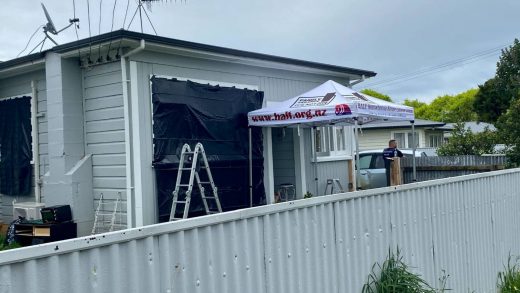
Minneapolis Star Tribune. May 2, 2023.
Editorial: Keep improving state marijuana legislation
As Minnesota House and Senate finalize a bill, state should provide for stronger local control.
Minnesota is about to embark on a new era, one in which recreational marijuana will be legal, after passage by both the House and Senate.
If anything is clear about the protracted debate over legalization, it is that prohibition has been an abysmal failure, taking a heavy toll on a range of individuals, communities and public safety resources.
The cost has been worst for people of color. While white and Black Minnesotans consume marijuana at about the same rate, Bureau of Criminal Apprehension statistics showed that in 2022, Black people were more than four times as likely to be arrested for marijuana crimes as white people. A recent Star Tribune story noted the disparity could be even higher, since a fifth of the arrests that year did not contain race data.
Each infraction can make life forever harder, particularly when it comes to housing and good jobs. In a recent analysis, the American Civil Liberties Union ranked Minnesota as the eighth-worst state for racial disparities in marijuana arrests.
That’s why the expungement part of this legislation, while complicated, is so necessary and long overdue. Nothing can restore the years and lives lost to incarceration, especially in the early years of the war on drugs when sentences could be harsh. But once those arrests and convictions for a substance that will soon be legal in the state are removed, thousands of individuals will get a fresh start. How many? An estimated 60,000 Minnesotans have low-level cannabis offenses on their records. Those could be expunged automatically, while felony-level offenses would go for review by an expungement board.
Minnesota’s move, while realistic, is hardly groundbreaking. When Gov. Tim Walz signs the final bill, Minnesota will become the 23rd state to legalize cannabis. That means there is much to be learned from states that have gone before, both in how and how not to do it.
And despite the positive aspects of this legislation, there are some elements that Minnesotans should find concerning in the House and Senate bills.
The House bill, for instance, does not allow for local control. A new Office of Cannabis Management will determine by population how many licenses a locality should have. The license must be issued if the business proposal fits within that unit’s zoning laws. The Senate version would permit cities to control the number of licenses issued, although they would lack the ability to ban dispensaries.
As the Senate and House go into conference committee to reconcile these and other differences in the two bills, the Star Tribune Editorial Board strongly urges the conferees to consider giving communities more control over if, when, how and where such businesses can be located. Proponents of the ban say it is necessary to have sufficient legal dispensaries to stamp out the black market.
That may well be the case, and if simply issuing more licenses would ensure the end of the black market, that would be a stronger argument. But we still need to be convinced.
DFL Rep. Zack Stephenson, who shepherded the bill through the House, told an editorial writer that the primary tool for local governments would be zoning regulations, just as with many other businesses. “When I was on the Coon Rapids planning commission, there was some unhappiness with the number of self-storage and car wash businesses popping up,” he said.
Members had to tell people that “we didn’t have discretion to say there can’t be another self-storage. The question is, does it fit with land use regulations?” Stephenson acknowledged that some cities have gotten around that by passing moratoriums on certain types of businesses.
But self-storage and car washes differ from businesses selling recreational drugs, and we shouldn’t pretend they don’t. Under the legislation passed, local government can suspend but not revoke licenses for cannabis shops — the state must decide on final action. Local units are also responsible for enforcement.
Additionally, some communities will need time to get up to speed. Most states appear to have some type of opt-out program. If the demand is there, the pressure will build in communities to accept licensing.
Opponents such as Rep. Kristin Robbins, R-Maple Grove, have also expressed concern about the gap between the legal possession of cannabis on Aug. 1 and a regulatory framework for sellers that may take a year or two to become operational.
“The black market could have a year and a half head start,” Robbins told an editorial writer. “Cannabis will be legal to possess, but there won’t be any legal place to buy it for a while.” She and others have also expressed concerns about the lack of a legal definition of impaired driving for cannabis and the sheer amount individuals are allowed to possess at home, which is 1.5 pounds in the House bill and 2 pounds in the Senate.
Stephenson said he would not rule out a numerical limit on licenses similar to the Senate bill, though “it has drawbacks.”
That may be true. There will be drawbacks to any potential solution as Minnesota prepares not only to legalize a drug that has been outlawed on the federal level since 1937 but to undertake expungement of cannabis offenses and build the massive regulatory framework for what will be a new industry in this state.
Some communities will be clamoring to be the first to issue licenses. But lawmakers should respect the will of those less eager to do so and be willing to make adjustments as needed.
___
Mankato Free Press. April 28, 2023.
Editorial: Economy: Immigration would mitigate workforce shortages
Many of today’s economic problems can be related to workforce shortages, but we’ve spent little time thinking about one simple solution: immigration.
An analysis by Anthony Schaffhauser of the Minnesota Department of Employment and Economic Development showed that returning to immigration levels of 2015 could mitigate 25% of our workforce shortages.
The decline in the workforce that was in progress before the pandemic was made worse during and after the pandemic. That has led to Minnesota having record low unemployment at 2.3%, which in turn has created workforce shortages, supply chain issues and inflation.
Net international migration dropped precipitously during the pandemic from 9,317 in 2019 to 4,042 in 2021, a 57% decline. But the net international migration in Minnesota has been as high as 17,000 as recently as 2015.
Minnesota’s labor force also has been the victim of an aging population, with 22.5% of it being baby boomers nearing retirement. The youngest baby boomers would be about 60 years old today. So part of the workforce shortage has been simple demographics that are not likely to change anytime soon.
The DEED analysis estimates a workforce shortage of about 8,813 workers every year through 2030. Bringing net immigration back to the 2015 level would add about 2,550 working immigrants every year, thus alleviating about 25% of the shortfall, according to the DEED report.
The solution then to at least starting to alleviate workforce shortages would be to encourage international and domestic migration both with state and federal policies. The good news is that 93% of the current immigrants in the state are 15 or older, and they have a workforce participation rate of 73%, nearly 4% points higher than non-immigrants.
For ways to encourage immigrations, we can look to our Minnesota forefathers, as Minnesota government encouraged immigration in the late 1800s.
Businessman Eugene Burnand was commissioned by the state for two years to recruit Germans and other immigrants out of New York, according to research by the Minnesota Historical Society in a report called “The official encouragement of immigrants to Minnesota during the territorial period.”
He is said to have helped develop the German population of Minnesota from 147 circa 1850 to 18,400 in a decade, or from 2.5% of the population to 10%.
The report notes that Minnesota’s population grew from 4,500 to 172,000 in 10 years from about 1850 to 1860 and the role of immigration “cannot be disputed.”
And if there is worry about being “taken over” by immigrants, history also offers perspective. In 1890, 40% of Minnesota’s population was foreign born, according to the Minnesota Historical Society. That compares to 8% today.
Immigrants want to work. They would alleviate the workforce shortages that affect everything from eating out to finding the elderly nursing home beds. The idea of immigration for economic growth was a good idea in the 1800s. It remains so today.
END


